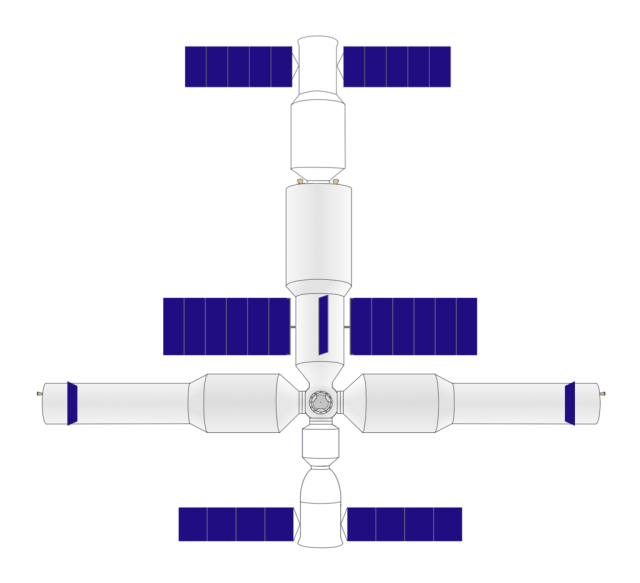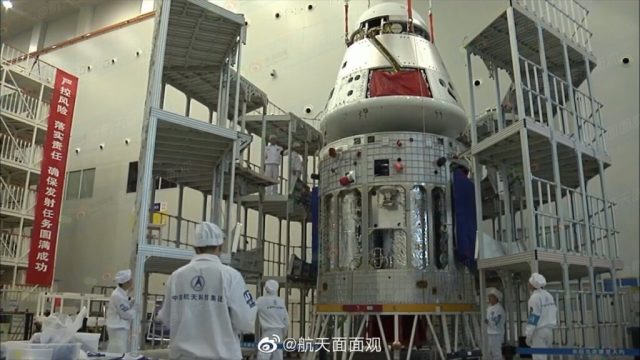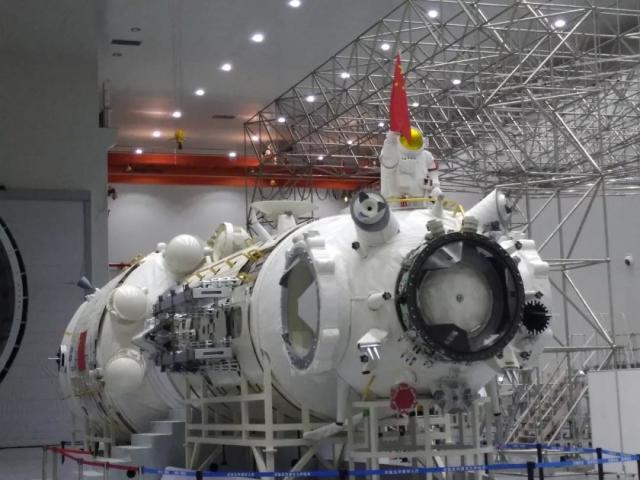Chinese experts have tested the main module of a promising space station. This brings the long-awaited moment of its commissioning closer.
The multi-module orbital station (OS) should become one of the most significant space achievements of the Celestial Empire. According to TASS, China has completed tests of the main module of the station — "Tianhe".
It was launched on April 29 using the Changzheng-5 carrier. During the test, we checked the functions that are associated with docking, the life of astronauts, as well as the work of the manipulator arm. All major systems are operating normally, so the module is ready to receive the Tianzhou-2 cargo spacecraft. It is expected to be sent into orbit this week.

Appearance of the basic module "Tianhe»
Image source: CNSA
The new station will be the third Chinese visited orbital object after the single-module "Tiangong-1" and "Tiangong-2". The OS under construction will be the third multi — module station in the history-after the Soviet Mir and the International Space Station.
According to the plans, the Chinese station will be located at an altitude of 340 to 450 kilometers: its service life should be more than ten years. There can be three taikonauts on board: it is possible to accommodate six people for a short period of time. The weight of the station is 66 tons.
They want to put the space station into operation as early as 2022: it can be available for international projects.

Sketch of the station with the docked manned ship "Shenzhou»
Image source: wikipedia
A more important space program for China can only be considered the exploration of the Moon. A huge achievement in this sense was the first Chinese return expedition from an Earth satellite-Chang'e-5. In 2024, Beijing wants to repeat the success by sending an unmanned vehicle "Chang'e-6"to the moon. Like its predecessor, it will collect samples and return to Earth.
All of this can be seen as part of a more ambitious plan to land Taikonauts on the moon. So far, China does not have the technical means to implement this, but by 2030, it can get a" lunar " superheavy carrier and a new-generation manned spacecraft, which theoretically will help to implement the plan. It should be noted that the prototype of a promising spacecraft was successfully tested last year.

Next-generation manned spacecraft
Image source: weibo
It cannot be ruled out that China will explore the moon together with Russia. In any case, this follows from the previously announced plan. The first stage of the creation of the Russian-Chinese lunar base is planned to be completed by the middle of the decade. The construction of the station can begin until 2030 — this will be the second stage. The third one is calculated from 2030 to 2035.

